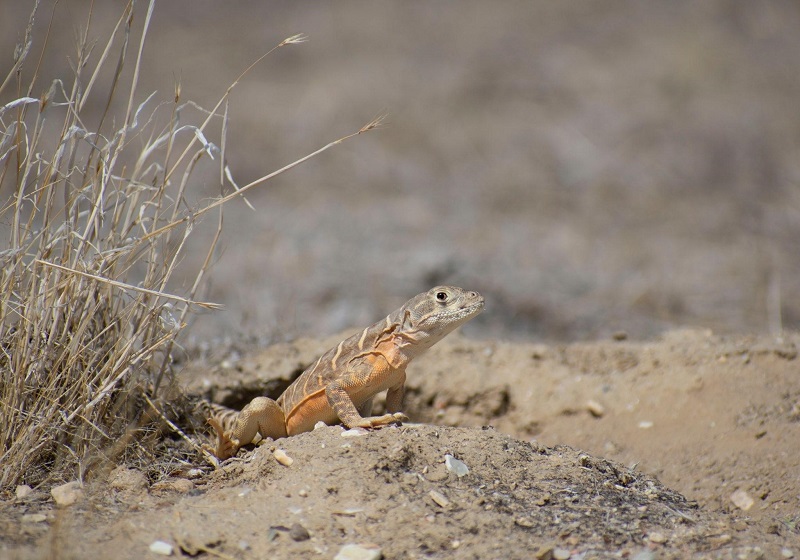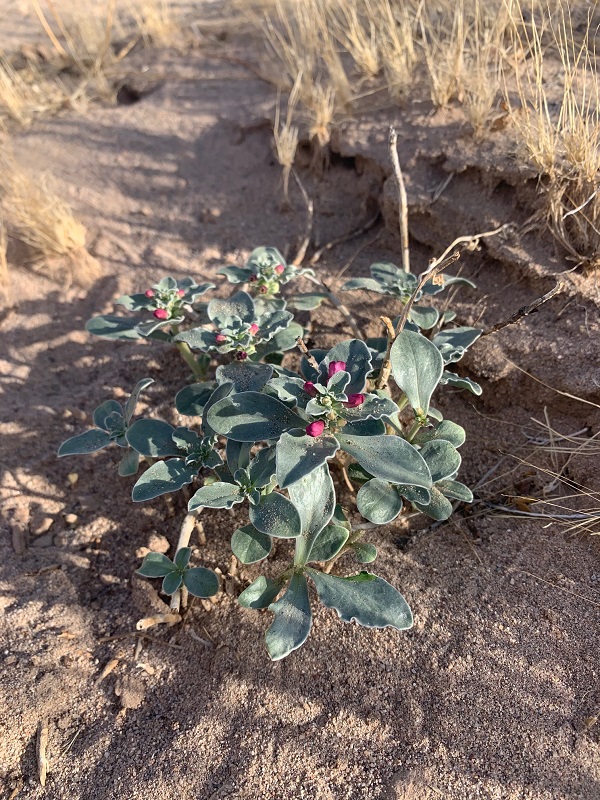
Gambelia sila – blunt-nosed leopard lizard
Submitted by Kai Medak
This lovely lizard was observed basking in the sun by Kai Medak in Kern County. The blunt-nosed leopard lizard is a relatively large lizard that can be distinguished from other species by its truncated snout, narrow head, and differing color and scale patterns. Habitats with patchy shrubs or grasslands are ideal for these animals as they allow shade without providing too much cover that would reduce the lizard’s ability to detect predators. Burrows are also incredibly important in the lifecycle of this species as they are utilized for brumation, nesting, and shelter from predators and extreme temperature. Individuals have been known to create their own burrows, but the old burrows of small mammals are primarily used.
Blunt-nosed leopard lizards are endemic to California and can be found in the San Joaquin Valley as well as in the foothills of the Coast Range. Unfortunately, this species’ current range has been restricted to 15% of its historical range due to habitat fragmentation and urban development. The blunt-nosed leopard lizard is listed as Federally Endangered under the Endangered Species Act, State Endangered under the California Endangered Species Act, and Fully Protected under the Fish and Game Code. Thank you, Kai, for sharing such a great photo!

Penstemon albomarginatus – white-margined beardtongue
Submitted by Alice L. Miller
Alice L. Miller found this rare desert plant while doing surveys in San Bernardino County. Penstemon albomarginatus is a perennial herb that is often found in desert dunes and Mojavean desert scrub habitats where it blooms from March to May. When in bloom, this plant displays purple to pink tubular flowers that are surrounded at the base by pointed, white-edged sepals and attract several species of bees, butterflies, and beetles. P. albomarginatus is known to inhabit the Mojave and Sonoran deserts in eastern California, southern Nevada, and western Arizona, but it is very rare in California with a California Rare Plant Rank of 1B.1 (rare or endangered in California and elsewhere; seriously threatened in California). This species is primarily threatened by the development of solar energy farms on desert lands, as well as other urbanization projects. A huge thank you to Alice for submitting data on this rare species!
Do you have some great photos of rare plants or wildlife detections? Submit them along with your findings through our Online Field Survey Form and see if your photos get showcased!